Country Reports
UNITED STATES OF AMERICA
David Hume and Ann Dallman
U.S. Department of Energy
TECHNOLOGY DEMONSTRATION
OPERATIONAL PROJECTS
-
Fred Olsen: The BOLT Lifesaver, a point-absorber device, was redeployed in October 2018. For this deployment the BOLT Lifesaver underwent modifications to host an oceanographic sensor package (Adaptable Monitoring Package), developed by the Pacific Marine Renewable Energy Center, to demonstrate the WEC’s ability to directly power external systems. The BOLT Lifesaver has multiple PTO units, each rated for a capacity of 10 kW. As of this writing, the device has been operational for 96 days and generated over 6,800 kWh.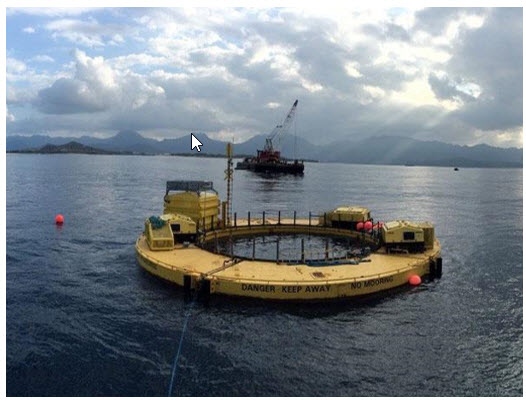
- The Living Bridge Project is an interdisciplinary smart infrastructure research project led by the University of New Hampshire. The project has converted the Memorial Bridge into a demonstration "smart bridge" by equipping it with structural health monitoring and environmental sensors on its structural elements and in the tidal Piscataqua River. To power these sensors and offset energy usage on the bridge, a 25 kW cross-flow vertical axis tidal turbine has been installed beneath the bridge on a turbine deployment platform designed and built by the University of New Hampshire Center for Ocean Renewable Energy. The cross-flow turbine was supplied by New Energy Corporation of Calgary, Alberta and has been in operation since June 2018; it will remain deployed for one year under this project.
PLANNED DEPLOYMENTS
-
Ocean Energy USA (OE): A 1-megawatt OE Buoy, an oscillating water column design, is currently under construction at Vigor Shipyard in Oregon and is slated for testing in 2019 at WETS.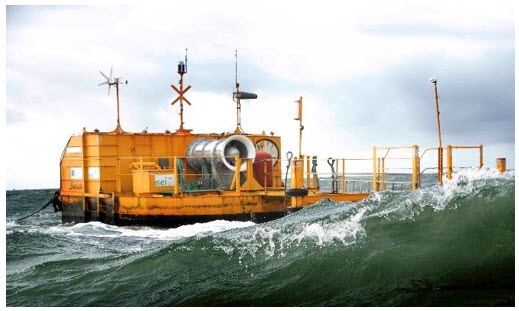
The deployment will last approximately one year and will provide useful performance data for model validations, reliability performance, and opportunities for cost reductions.
-
Columbia Power Technologies (C·Power): C·Power has completed physical testing of its novel, direct-drive PTO at NREL. The PTO, which includes a 6.5 m diameter, 4 mm airgap, permanent-magnet 500 kW generator, is being updated in preparation for use in their grid-connected, open-water demonstration project at WETS, starting in the later-half of 2019. This one year deployment will provide valuable reliability data, as well as indicate opportunities for design improvements and optimization. C·Power will begin fabrication of their StingRAY H2 WEC device for WETS in early 2019. C·Power has also commenced physical testing at NREL of mixed-material (composite and metal) hull components for its structural optimization project and initiated an advanced controls project with SNL; both projects will be completed in 2019.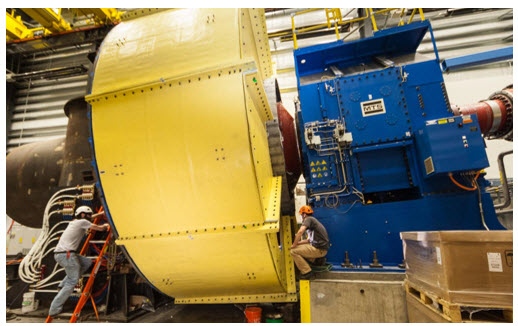
-
Northwest Energy Innovations (NWEI): NWEI’s Azura™ is a multimode, point absorber WEC that extracts power from both the heave and surge motions of waves to maximize energy capture.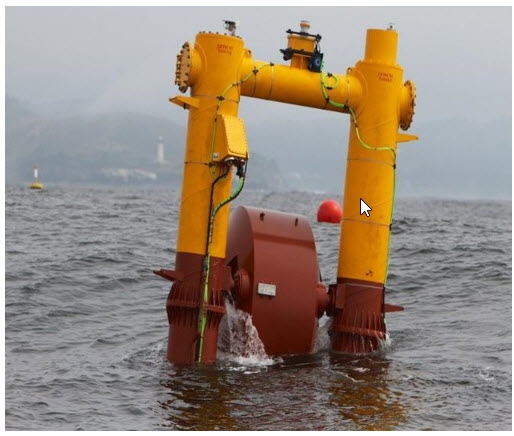
NWEI previously tested their technology in Oregon in 2012, and a half-scale device was tested with 98% availability for 19 months beginning in June 2015 at the 30-m berth at WETS.
NWEI redeployed their full-scale system at WETS this past February 2018 and is shooting to deploy again in 2020 or 2021.
-
Verdant Power: Verdant’s Fifth Generation Kinetic Hydropower System (Gen5 KHPS) is an axial flow current-capturing turbine system. Verdant and its partners are working on the design of a TriFrame that optimizes turbine spacing and structural requirements to allow for cost-effective installation, operation, maintenance, and retrieval. Verdant plans to test this new system along with their Gen5 KHPS at their pilot project site in the East River near New York City.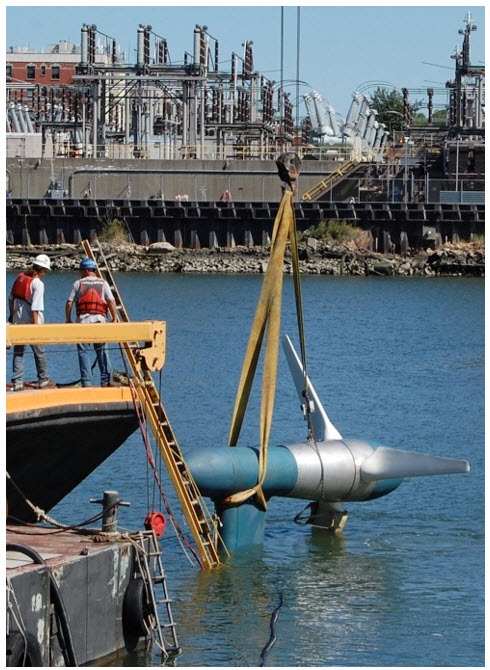
This project will advance understanding of optimal turbine spacing and best practices for installation, maintenance, and retrieval of underwater turbines.
Following the successful demonstration of the TriFrame system in 2020, Verdant is considering converting the Roosevelt Island Tidal Energy project to a fully functioning world-class test and demonstration facility for distributed generation, energy storage, and electric vehicle charging stations, while executing its global commercial launch.
-
Ocean Renewable Power Company: Igiugig Village of Alaska is partnering with Ocean Renewable Power Company (ORPC) to develop the RivGen Power System, a submerged cross-flow river current turbine system. In 2014, WPTO funded a successful demonstration of ORPC’s RivGen turbine and has decided to provide additional support to deploy and operate a next-generation RivGen Power System in 2019. The project will serve as an example to remote locations on how they can reduce energy costs and offset diesel generation using marine energy.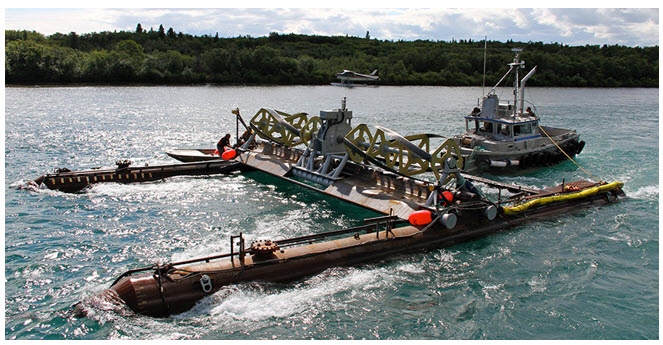
-
Ocean Power Technologies (OPT) has a contract to supply Oil & Gas company, Premier Oil, with one of its PowerBuoy systems for the deployment in an oil and gas field in the Central North Sea. The PowerBuoy will serve as an intelligent platform to provide communications and remote monitoring services at the site in support of Oil & Gas operations. OPT is targeting a deployment date in the summer of 2019.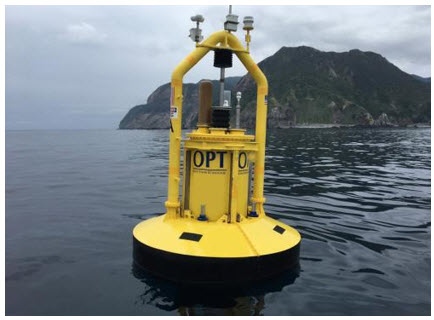
- Oscilla Power: Oscilla Power is developing a point absorber with a heave plate type WEC called the Triton WEC. The company has done extensive testing at scale and recently concluded WPTO-funded testing on survivability design methodologies. The company is aiming to test their system in the second half of 2019 at WETS in Hawaii.
- Both AquaHarmonics and CalWave, first and second-place winners of the 2016 Wave Energy Prize respectively, have been advancing their designs. Both companies are aiming to deploy scaled-systems at WETS in the coming years.



